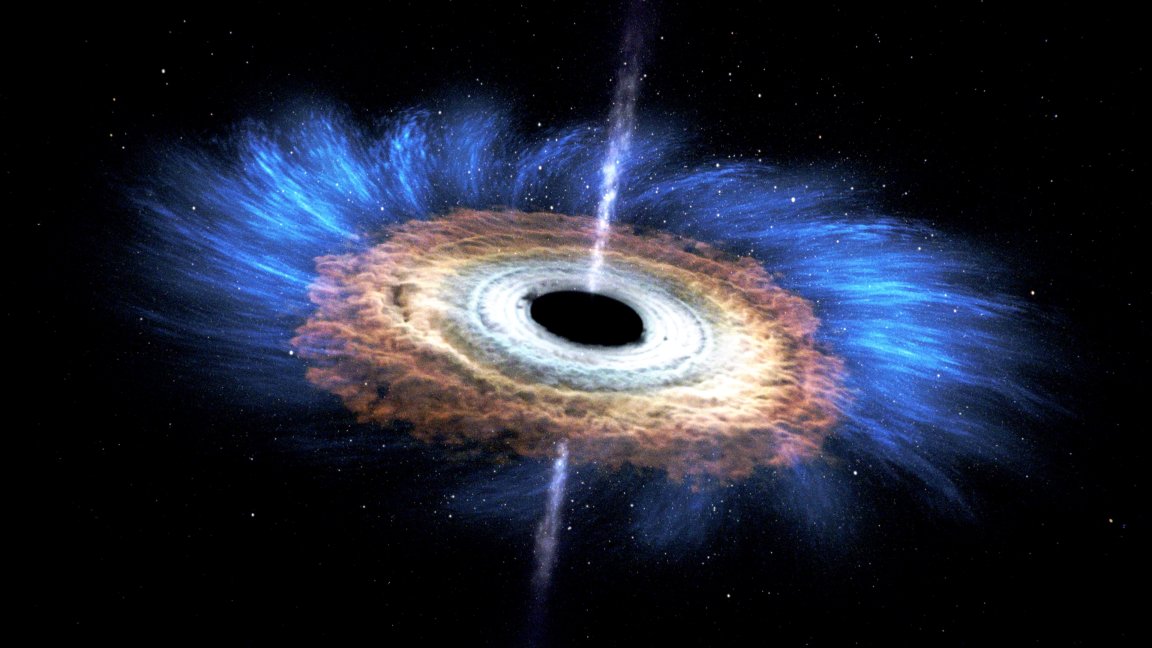
A Monstrous Marauder
Japanese astronomers have found evidence that an intermediate-mass black hole (IMBH) with 100,000 times the mass of our Sun is lurking in a cloud of lethal gas close to the center of our galaxy. Once confirmed, the colossal gravity well will become the second biggest black hole in the Milky Way, behind only Sagittarius A*, a supermassive black hole with 4 million times the Sun’s mass.
“This is the first detection of an intermediate-mass black hole candidate in the Milky Way galaxy,” Tomoharu Oka, an astonomer at Keio University in Tokyo, told The Guardian.
The gases in the elliptical cloud, which is 150 trillion kilometers (93 trillion miles) wide and more than 200 light-years from Earth, move at drastically different velocities. This unusual movement perplexed the researchers, so they decided to point the powerful ALMA telescope in Chile’s Atacam desert at the cloud.
They discovered that the movement of the gases, which include carbon monoxide and hydrogen cyanide, was caused by immense gravitational forces. Based on computer models, the researchers determined that the movement is most likely caused by a black hole no greater than 1.4 trillion kilometers (870 billion miles) wide.
Because nothing — not even light — can escape black holes, scientists must infer their existence indirectly, via surrounding visible light, x-rays, or radio waves. Immensely strong radio waves were detected at the center of the cloud, further supporting the hypothesis that it contains a black hole.
In-Between Black Holes
Until now, astronomers have only been able to detect black holes that are either small or large. That’s a little like a city that’s home to only children and the elderly, with no one in between.
Small black holes come into being when specific types of stars go nova at the end of their lifespan. While only about 60 of these smaller black holes have been confirmed, scientists estimate our galaxy contains about 100 million of them.
The supermassive black holes on the high end of the mass spectrum, such as Sagittarius A*, usually reside at the center of gigantic galaxies. However, the origin of that black hole and the still-larger ultramassive black holes remains a mystery to scientists.

One theory proposes that smaller black holes eat each other up, slipping closer and closer to the center of galactic mass as they grow heavier. But if this is the case, where are all the black holes halfway between pint-size and leviathan? If this cloud-dwelling black hole discovered by the Japanese astronomers is confirmed at 100,000 solar masses, it will be the first “missing link” black hole the world has ever seen.
In his research, which has been published in Nature, Oka notes that he suspects the new black hole could be the remnants of an old dwarf galaxy gobbled up in the formative years of the Milky Way, billions of years ago.
That would mean we’re also witnessing the death of a galaxy, and if this black hole follows the trend, its future probably holds another cannibalistic end. Eventually, Oka explained to The Guardian, the object will sink toward Sagittarius A*, closer and closer, until it’s swallowed up, increasing the mass of Sagittarius A* as it joins it at the heart of our galaxy.